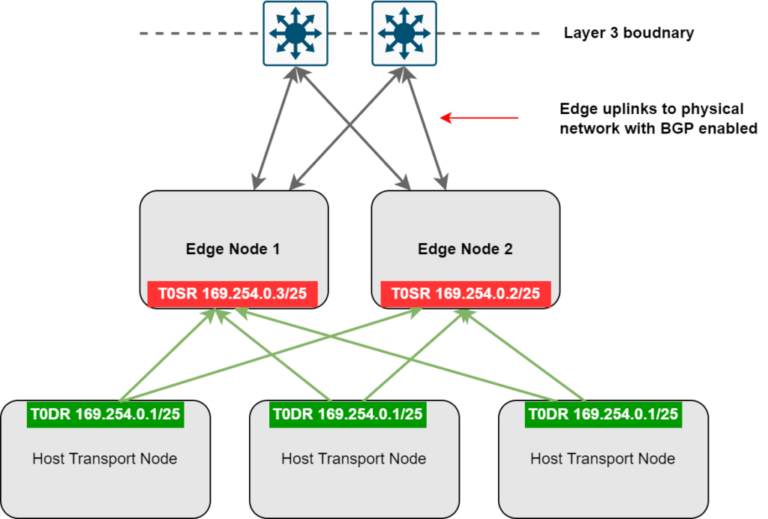
Pay-as-you-go pricing models let businesses only pay for their computing resources and bandwidth. This model minimizes the waste of unused resources. Scaling up or down based on demand becomes more accessible, which ensures that companies only spend what is necessary.
Understanding these aspects helps large enterprises make informed decisions about cloud adoption, ensuring their needs are met efficiently and effectively.
Cloud services support agile operations by providing flexible and scalable resources. Agile teams benefit from the quick provisioning and de-provisioning of resources, which allows them to respond swiftly to changing requirements and workloads.
Understanding Cloud Technology and Its Impact on Connectivity
Using cloud-native tools and services enhances flexibility. These tools are designed to work seamlessly within the cloud environment, enabling efficient development and deployment. Kubernetes and serverless computing support agile operations by providing robust, scalable infrastructure.
Defining Cloud Adoption and Its Relevance to Businesses
Adopting cloud services allows businesses to scale their operations efficiently. They can quickly increase or decrease their IT resources based on demand. This is especially helpful for startups and growing companies that need flexibility. Additionally, cloud adoption supports digital transformation using modern applications and technologies, like AI and big data analytics.
Security and compliance are critical for large enterprises. Many cloud providers offer advanced security protocols and compliance certifications essential for handling sensitive data. These include encryption, multi-factor authentication, and regular security audits.
Examining Network Performance and Scalability Benefits
Cloud technology significantly enhances how businesses connect and operate. It improves network performance and scalability, enabling faster, more secure, and flexible interactions across different platforms.
Many businesses are shifting towards cloud-based networks that support non-802.1X devices through technologies like MAC Authentication Bypass. This ensures that even devices without advanced security protocols can connect to the network safely.
Intrusion detection systems (IDS) are critical in identifying potential security threats. These systems monitor network and system activities for malicious actions or policy violations. An effective IDS can detect unusual traffic patterns, unauthorized access attempts, and other indicators of compromise.
Organizations need to focus on service configuration, automation, and agility to leverage cloud technology. Each element is crucial in optimizing the cloud experience and overcoming technology limits.
Strategies for Efficient Cloud Implementation
Organizations leveraging cloud technology must implement strong security measures to protect their data and maintain network integrity. Key measures include robust access control, advanced intrusion detection systems, and data protection through encryption and firewalls.
Best Practices in Cloud Service Configuration
Real-time monitoring powered by machine learning provides insights into system health, enabling faster response to anomalies. This enhances overall system performance and ensures continuous operation without interruption.
Firewalls create a barrier between trusted internal networks and untrusted external ones. By setting up firewall rules to control incoming and outgoing traffic, organizations can prevent unauthorized access and reduce the risk of data breaches. Regularly reviewing and updating firewall configurations is crucial to maintaining strong security postures.
Establishing robust disaster recovery plans ensures service continuity during unexpected disruptions. These plans should be tested regularly to ensure they remain effective, providing a reliable safety net that ensures long-term service reliability.
Maximizing Productivity with Automation
One of the main benefits of cloud technology is improved network performance. Cloud networks offer low-latency connections, ensuring data moves quickly and efficiently. This speed is crucial for applications that require high performance and real-time data processing, like online gaming or financial transactions.
Consistent and reliable services are crucial for cloud operations. Implementing automated deployment plans can standardize updates, reduce the risk of errors, and ensure that all systems are up-to-date. This maintains consistent performance across the organization.
Scalability is another significant advantage of cloud connectivity. Traditional networks often need help scaling due to the high costs and complexity of adding new hardware. With cloud technology, businesses can easily adjust their network capacity. This flexibility ensures they have enough resources during peak times without overpaying during quieter periods.
Achieving Agile Operations through Cloud Services
Selecting the right service provider is essential. Organizations should evaluate providers based on their services’ reliability, scalability, and security features. Using configuration management tools to standardize and streamline setup processes is essential. These tools help maintain consistency and reduce errors across different environments.
Scalability is also crucial. Cloud platforms allow businesses to scale their resources seamlessly without compromising performance. This flexibility is vital for companies experiencing rapid growth or fluctuating workloads.
Cloud connectivity solutions, such as SD-WAN, further enhance performance and scalability. They provide more reliable and secure connections between on-premises infrastructure and cloud services, improving overall efficiency and allowing more significant innovation.
Security Measures in the Cloud Environment
Regularly monitoring system performance helps identify bottlenecks and inefficiencies. IT teams can swiftly address these issues, maintaining smooth and reliable service delivery. Automated tools and dashboards can provide detailed insights into performance metrics, ensuring deviations are quickly corrected.
Ensuring Robust Access Control and Network Security
Regular training and skill development are also encouraged. Ensuring team members are knowledgeable about the latest cloud technologies and best practices helps maintain an agile and efficient workflow, which is essential for adapting to new challenges and opportunities.
Sometimes, issues such as no wifi hardware installed on Mac can hinder these benefits. Still, they can be resolved with appropriate troubleshooting steps, such as resetting the NVRAM, checking for software updates, or reconfiguring the network settings.
Incorporating Advanced Intrusion Detection Systems
By Randy Ferguson
Network security protocols like Virtual Private Networks (VPNs) help secure data transmissions. Network segmentation can further enhance security by isolating different parts of the network, reducing the risk of lateral movement by attackers. Additionally, closely monitoring network traffic and maintaining up-to-date firewall rules can help prevent unauthorized access.
Protecting Data with Encryption and Firewalls
Regularly monitoring cloud resources is also necessary. Performance metrics and usage data should be analyzed to optimize cost and improve efficiency. Organizations can quickly address any potential issues by setting up alerts for unusual activity.
Additionally, integrating automation with continuous integration and continuous deployment (CI/CD) pipelines streamlines development workflows. This integration speeds up the delivery cycle and minimizes errors, allowing teams to focus on innovation and improvement.
Maintaining strict access control, utilizing advanced intrusion detection systems, and protecting data with encryption and firewalls are fundamental to securing cloud environments.
Optimizing IT Operations and Performance in the Cloud
Machine learning can also optimize cloud resources by analyzing usage patterns. This helps allocate resources more efficiently, minimizing costs and enhancing performance. Automating these processes frees IT teams to focus on strategic initiatives rather than repetitive maintenance tasks.
Enhancing Maintenance with Machine Learning
Automation can significantly enhance productivity by reducing manual intervention in repetitive tasks. Cloud automation tools can handle tasks such as provisioning resources, managing backups, and deploying applications. These tools help save time and ensure processes are completed accurately.
Cloud solutions allow Macs to overcome hardware limitations, providing enhanced performance and security. This eliminates the need for specialized on-site infrastructure, making high-level computing accessible and more affordable.
Leveraging cloud technology offers significant business value and cost-effective solutions. It helps companies realize cost savings and provides scalable solutions tailored for large enterprises.
Maintaining Service Consistency and Reliability
Cloud adoption refers to businesses’ use of cloud computing services. Companies move their IT infrastructure, applications, and data to cloud platforms like AWS, Google Cloud, or Microsoft Azure. This shift helps businesses reduce hardware and maintenance costs while gaining access to advanced computing resources.
Deploying both network-based and host-based IDS can improve detection capabilities. Regularly updating these systems ensures they can recognize the latest threats. Combining IDS with robust incident response plans allows organizations to address and mitigate potential security breaches, minimizing damage quickly.
Return on investment (ROI) from cloud solutions can be very favorable. Savings in infrastructure and the ability to quickly adapt to market changes contribute to this. Additionally, faster deployment times mean quicker realization of benefits.
The Business Value and Cost Considerations of Cloud Technology
Cloud technology can provide substantial cost savings for businesses. By moving to the cloud, companies can reduce hardware and maintenance expenses. This shift allows businesses to convert capital expenditures into operational costs, which can be more manageable.
Analyzing Cost Savings and Return on Investment
Access control is vital for cloud security. Organizations should implement multi-factor authentication (MFA) to verify user identities and restrict access to sensitive information. Administrators can use fine-grained access control policies to ensure that only authorized personnel can access specific resources.
With advancements in cloud computing, such as Private Cloud computing, users can maintain secure and efficient connections without relying on traditional methods. Cloud services enable Macs to handle more significant amounts of data and complex processes, ensuring seamless operation.
Automated scaling is another crucial aspect. It adjusts resources based on demand, helping to avoid over-provisioning and reducing costs. This dynamic approach ensures that applications run smoothly without manual adjustments.
Assessing Cloud Solutions for Large Enterprise Needs
Optimizing cloud performance and IT operations is critical for maintaining service reliability and ensuring efficient maintenance. Companies can enhance these areas using machine learning and providing consistent service delivery.
Machine learning helps improve IT operations by automating routine tasks and identifying potential issues before they become critical. Predictive analytics can forecast equipment failures, allowing organizations to perform proactive maintenance. This reduces downtime and increases system reliability.
Large enterprises have specific needs when it comes to cloud technology. They often require robust infrastructure environments for high computing demands and extensive data bandwidth. Cloud providers offer solutions tailored to these requirements.
Proper cloud service configuration can significantly impact the performance and cost-efficiency of cloud resources. The first step is to classify data based on sensitivity and regulatory requirements. This ensures that sensitive information remains secure and compliant with relevant laws.
Encryption is essential for protecting data both at rest and in transit. Robust encryption protocols ensure that even if data is intercepted, it cannot be easily read or used. Cloud providers often offer built-in encryption services, which organizations should leverage to secure their data.





